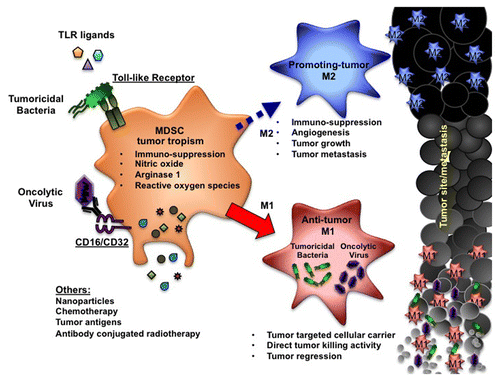Figures & data
Figure 1. Alternative function of myeloid-derived suppressor cells as a cellular vehicle for the tumor-targeted delivery of oncolytic viruses and other anticancer (immuno)therapeutics. The main hallmark of myeloid-derived suppressor cells (MDSCs) is their tumor-promoting capacity, resulting from the suppression of anticancer immune responses and the stimulation of neoangiogenesis. Nevertheless, the selective tropism of MDSCs for malignant tissues renders them an ideal cellular vehicle for tumor targeting. Upon loading with viruses/bacteria or stimulation with Toll-like receptor (TLR) agonists, MDSCs convert from M2-like tumor-promoting cells to M1-like tumor-suppressing effectors. This phenotypic conversion not only overcomes the tumor-supporting functions of MDSCs but also endows them with tumoricidal and immunostimulatory activities.
